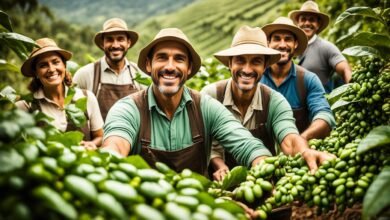Coffee Culture and Lifestyle
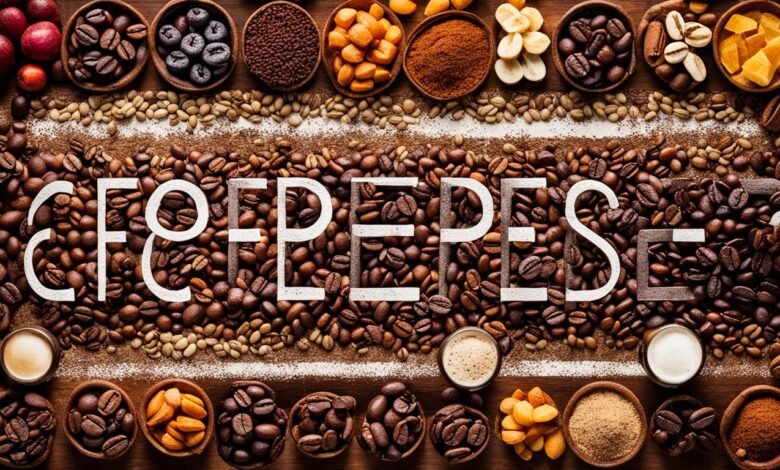
Imagine walking into a cozy café, filled with the smell of fresh specialty coffee. This scene shows how important coffee is in our lives. It’s more than just a drink; it’s a special ritual for many.
From coffee lovers enjoying their unique brews to those searching for the perfect cup, coffee’s world is fascinating. It’s a mix of different cultures, trends, and a love for this drink.
In this article, we’ll explore the exciting world of coffee culture. We’ll talk about how taste is personal, the history of coffee in major places, and the many coffee cultures out there. We’ll also look at why people love coffee and its many roles in our lives. Plus, we’ll see how coffeehouses are important to society.
Join us as we discover how coffee connects us across the globe. It’s a journey into the heart of sustainable coffee culture.
Key Takeaways
- Coffee culture is a mix of global traditions, trends, and experiences.
- Specialty coffee and artisanal roasters are making more people love coffee.
- Places like Brazil, Indonesia, and India have their own coffee stories and ways of making it.
- How we drink coffee has changed, showing the many reasons we enjoy it.
- Coffee is more than a drink; it’s used in food and wellness products too.
The Subjectivity of Taste
What makes coffee “good” varies a lot, showing how different Coffee Flavor Profiles, Coffee Brewing Methods, and traditions are around the world. In Vietnam, they enjoy a sweet coffee called “egg coffee.” In Nordic countries, they prefer a simple way of making coffee. These differences let us peek into a region’s culture and its connection with the world.
Culinary Adventures with Coffee
Coffee has become more than just a drink. It’s now a key part of Coffee Infused Cuisine, loved globally for its variety. You can find everything from rich Vietnamese egg coffee to fancy coffee dishes in upscale restaurants. Chefs love using coffee in their recipes, making it a big part of modern cooking.
Coffee’s Foray into Wellness and Beauty
Coffee’s charm has spread beyond the coffee cup, into Coffee Wellness and Coffee Beauty Products. People use it in body scrubs and eye creams because of its antioxidants and energy boost. This shows how coffee is now a big part of the wellness and beauty world, thanks to its natural benefits.
| Coffee Flavor Profiles | Coffee Brewing Methods | Coffee Ceremony |
|---|---|---|
| Citrus, Fruity, Chocolate, Caramelized Sugars, Roasty | Espresso, Pour-Over, French Press, Cold Brew | Traditional Ethiopian, Japanese Tea Ceremony, Vietnamese Egg Coffee |
“The most inspiring thing about coffee is its diversity – the way it reflects the land, the weather, the soil, and the culture of the place where it’s grown.”
Major Coffee Hubs and Their Rich Histories
The world map of Coffee Origin Countries is full of stories of adventure and passion. The Dutch brought coffee to Java in Indonesia, while the Portuguese shaped Brazil’s Coffee Cultivation. The tale of Baba Budan smuggling coffee seeds from Mecca to India shows the complex history of coffee.
These stories highlight the deep impact of coffee on the world. They show how coffee changed the ecology, economy, and global image of different regions.
In the Ottoman Empire, Sultan Murad IV made drinking coffee a crime in 1633. This was due to coffeehouses being popular among janissaries. King Charles II of England tried to control coffee houses in 1672 to stop “false news” and political talks.
During the Enlightenment, coffeehouses were called “penny universities” in Oxford. They were places for deep discussions and debates. In London, coffee houses helped start new ideas and industries, like the London Stock Exchange.
“Coffee became a symbol of patriotism in the American colonies post-Boston Tea Party, indicating the shift in preferred beverages and the association of coffee with revolutionary sentiments.”
In Paris, cafes were key during the French Revolution. They were where revolutionaries and thinkers met. Famous writers like Ernest Hemingway and F. Scott Fitzgerald also hung out in these cafes, showing how they helped creative and intellectual groups.
Coffee is the second most traded item in the world, after oil. In the 18th and 19th centuries, Brazil, Colombia, and Jamaica were big coffee exporters. Today, Australia’s Coffee Culture is booming, thanks to its location near Asia and the Pacific, where top-quality coffee beans are grown.
Coffee Cultures in Their Full Splendor
Coffee brings people together across borders and cultures. Each nation and community adds its own twist to this beloved drink. From the Turks’ fine-ground brews to the Middle Easterners’ cardamom blends, coffee is a world of diverse flavors and traditions.
South Korea has become a major player in the coffee world. What was once a small part of the global coffee scene has grown into a thriving café culture. South Koreans have turned coffee into an art, with beautiful cafes and unique drinks that have won the world’s attention.
Exploring the Diversity of Global Coffee Traditions
Coffee culture is more than just the drink. It reflects history, anthropology, and art. The Italians gave us espresso, while the Ethiopians make the coffee ceremony a spiritual event. Around the world, coffee is a big part of daily life and social gatherings.
| Coffee-Producing Region | Unique Characteristics |
|---|---|
| Brazil | Reigns supreme in coffee production with vast plantations that seem to stretch endlessly. |
| Colombia | Synonymous with high-quality Arabica coffee, known for its well-balanced acidity and notes of caramel and nuts. |
| Ethiopia | The birthplace of Arabica coffee, boasting diverse flavors like fruity Yirgacheffe and bold Sidamo. |
| Guatemala | Produces coffees with distinct acidity and vibrant flavors, particularly notable in the Antigua region. |
| Jamaica | Celebrated for its Jamaican Blue Mountain coffee, known for its luxury status and mild, balanced flavor profile. |
| Vietnam | A powerhouse in Robusta production, offering bold and intense flavors with earthy notes unique to Vietnamese coffee. |
| Yemen | Known for its Yemeni Mocha coffee with winey acidity and chocolatey undertones, reflecting the historical significance of coffee trade. |
| Indonesia | Sumatra produces coffee with an earthy and herbal character, popular for its full body and low acidity. |
The world of Global Coffee Traditions shows the rich variety of coffee culture. From Ethiopia’s ancient Coffee Ceremony to South Korea’s modern Café Culture, coffee connects people, places, and the joy of enjoying a perfect cup.

When Do We Crave Coffee? Exploring the Times and Reasons
In today’s fast-paced world, coffee is a must-have for many. Our coffee habits have changed with society. From Ethiopian monks to 17th-century European coffeehouses, coffee has always been a big part of human life.
Coffee’s Chronological Evolution
The industrial revolution made coffee key for workers to stay awake and productive. Now, coffee shops today mix old social spots with new tech vibes.
Modern-Day Resonance
Our coffee habits show how we live today. Morning coffee gets us ready for the day. Afternoon cups help us relax. Evening coffee is for unwinding and being with friends.
Studies say a little caffeine can make us happier and calmer. But too much coffee can cause problems like sleep issues, stomach problems, more anxiety, and dehydration.
Our love for coffee is complex, tied to both our personal lives and society. Whether it’s for a morning boost, a midday break, or an evening treat, coffee stays a big part of our lives. It shapes how we see Coffee Consumption Patterns, Coffee History, Coffee Social Hubs, and Coffee and Productivity.
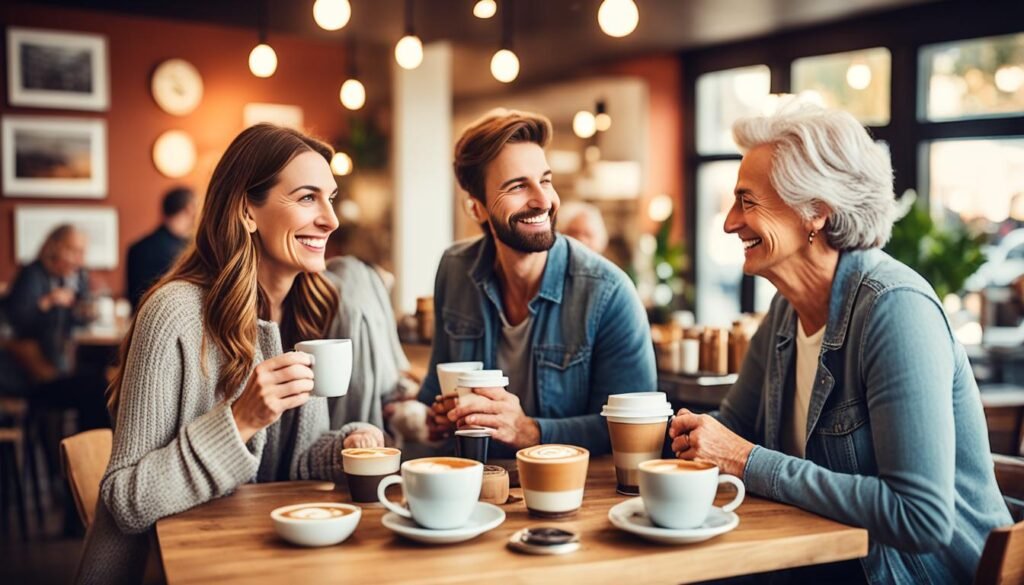
Beyond the Mug: Coffee’s Myriad Avatars
Coffee has grown beyond being just a drink, entering our kitchens, beauty routines, and wellness plans. In Italy, its scent comes from desserts like tiramisu. In Mexico, it adds depth to mole’s complex flavors. Coffee-infused skincare products use caffeine to improve blood flow, fighting puffiness and dark circles. From dry rubs for barbecues in Australia to facial scrubs in fancy stores, coffee’s wide appeal is clear.
The Maillard reaction, happening between 140 and 165 degrees Celsius, creates coffee’s rich flavors. Light roasts offer floral and fruity tastes, while dark roasts have smoky and spicy notes. Volatile compounds in coffee’s aroma add to its unique flavor.
In Coffee Wellness Benefits, its caffeine and acids boost energy and help with circulation. Coffee Beauty Products use caffeine to lessen puffiness and dark circles, making it a key ingredient in skincare.
| Coffee Culinary Applications | Coffee Wellness Benefits | Coffee Beauty Products |
|---|---|---|
| Tiramisu, mole, dry rubs, coffee-infused desserts | Stimulating, energizing, reducing puffiness and dark circles | Skincare products, facial scrubs, coffee-infused beauty items |
Coffee is evolving beyond the mug, captivating people in various fields. From its rich flavors in cooking to its wellness and beauty uses, coffee is changing how we see and enjoy it.
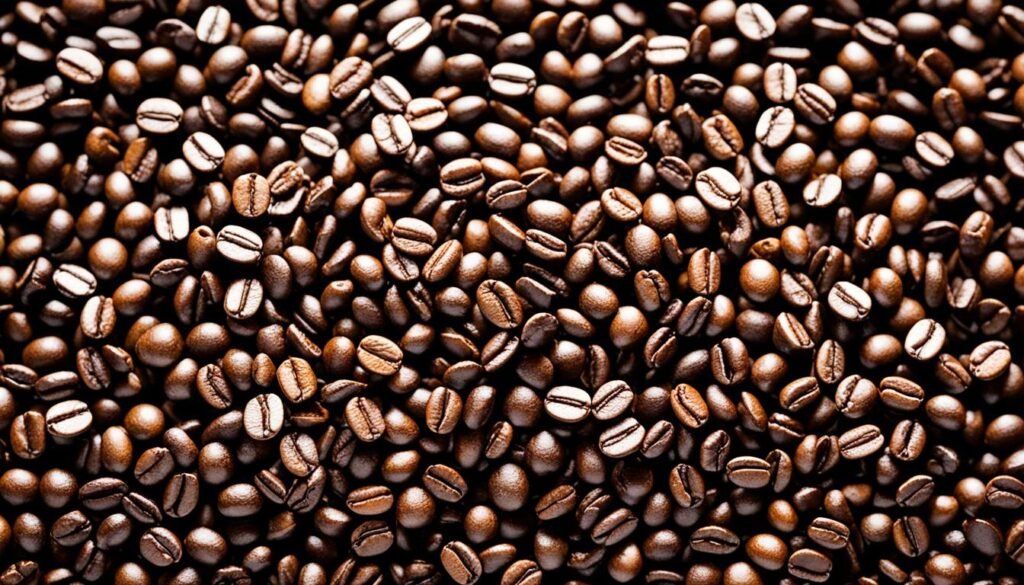
“Coffee has become a symbol of urban lifestyle and culture in the modern era.”
Coffeehouses: Social Hubs of Coffee Culture
Coffeehouses have always been key spots for coffee culture. They’ve changed a lot over the years. These places have been important for sharing ideas and making social connections.
They started in the Ottoman Empire as “kahvehane.” Later, in 17th-century Europe, they were called “Penny Universities.” People went there to talk, create art, and do business.
Now, coffeehouses have changed again. They offer free internet, making them great for studying, working, and catching up with friends. Coffee helps people feel more alert and happy, making these places perfect for getting things done.
Young people love specialty coffee shops now. These places offer unique coffee experiences. Because of this, visits to these shops have gone up by 15%.
Marketing and branding have also made people buy more coffee. This shows how much coffee reflects our personal style and values, especially in cities.
Coffeehouses are now where people meet, study, or just relax. They’ve seen a 40% increase in use for these activities. These places are also where people connect online, with social media use growing by 50% in the coffee world.
The coffee industry is getting more tech-savvy and eco-friendly. This means coffeehouses will likely become even more important for socializing and staying connected. They’re adapting to what coffee lovers want, from ordering on phones to getting special coffee beans by subscription.
“Coffeehouses have long been the epicenter of coffee culture, serving as vibrant social hubs that have evolved over time.”
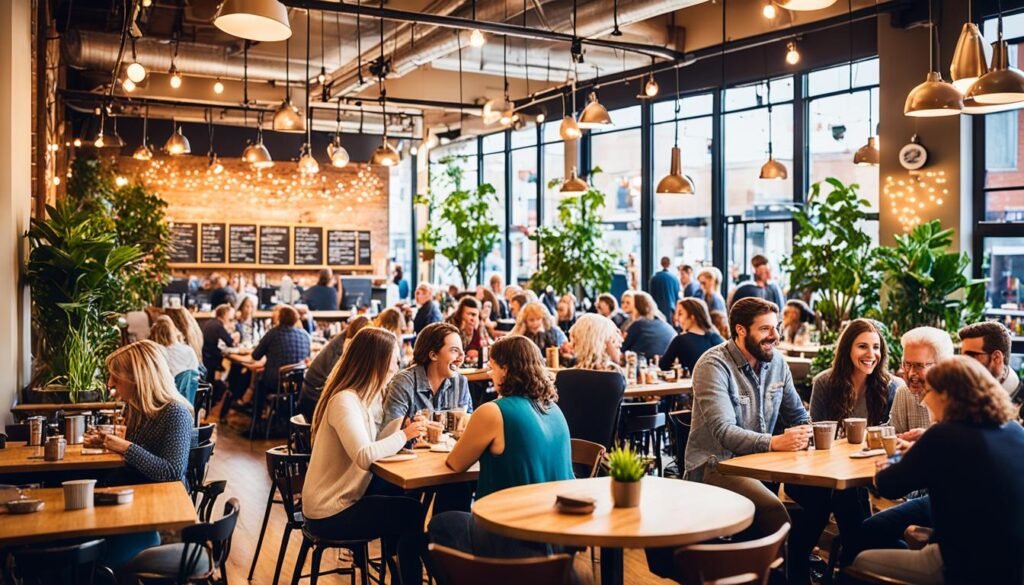
Coffee Lifestyle: A Global Phenomenon
Coffee culture has spread across the globe, bringing people together. It’s loved in Seattle and Helsinki alike. [https://winwin.coffee/blog/the-coffee-culture-a-global-phenomenon]
The US, Germany, Japan, and many European countries love their coffee the most. Finland takes coffee very seriously. In Turkey, Turkish coffee is a big deal. Italy loves its espresso.
Coffee has changed how we socialize and think. It’s a big deal in the economy too. Over 70 countries depend on coffee for their economy. Brazil, Vietnam, and Colombia are the top producers.
| Country | Annual Coffee Consumption (Kg per Capita) |
|---|---|
| Finland | 12.0 |
| Norway | 9.9 |
| Iceland | 9.0 |
| Denmark | 8.7 |
| Netherlands | 8.4 |
Millions of farmers make a living from coffee. The “Third Wave” coffee movement values quality and sustainability. Coffee can also help prevent some diseases and make you more alert.
Shade-grown and organic coffee are key for the future. Fair Trade helps farmers get fair prices and use sustainable methods.
“Coffee is the common thread that weaves together diverse cultures and communities around the world, creating a global lifestyle that celebrates the simple pleasure of a perfect cup.”
Coffee brings people together in Paris, Italy, and Scandinavian homes. It’s a key part of global culture, making social connections and enriching lives.
Conclusion
Our journey through the world of coffee culture has been amazing. It showed us that coffee is more than just a drink. It’s a way to explore different cultures and traditions.
From Seattle’s artisanal roasters to Ethiopia’s elaborate coffee ceremonies, every cup tells a story. It connects us to the world’s rich history. Let’s enjoy each moment, learn from the stories, and celebrate the Coffee Culture Diversity.
Studies say moderate coffee drinking might be good for us. It could help prevent Parkinson’s disease, type 2 diabetes, and heart disease. But, heavy drinkers might have other habits that affect their health. Pregnant women and those with health issues should watch their caffeine intake.
When we Appreciating Coffee Traditions, we see coffee brings us together. It connects us with a global community of coffee lovers. Every sip lets us share in the rich history and cultural practices of coffee.

